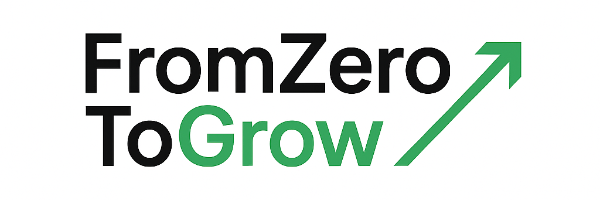Building A Network From Scratch After A Career Change
Learn effective strategies for building a professional network from scratch after a career change, ensuring long-term growth and opportunities.

Switching careers often means starting fresh with your professional network. Why does this matter? Because 85% of jobs are filled through personal or professional connections, and many opportunities exist in the "hidden job market" that you can only access through networking. But starting from scratch can feel overwhelming - your old contacts may not align with your new goals, and networking itself can feel awkward or intimidating.
Here’s what you need to know to make it work:
- Craft your career change story: Clearly explain your past experience, why you’re transitioning, and your future goals. Keep it short and relatable.
- Leverage existing connections: Friends, family, alumni, and former colleagues can introduce you to people in your target field.
- Set clear goals: Define what you want from networking - whether it’s industry insights, mentorship, or job leads - and track your progress.
- Attend events and use online platforms: Meet professionals face-to-face at industry-specific gatherings or connect through LinkedIn and other forums.
- Conduct informational interviews: These are low-pressure conversations to learn about your new field while building relationships.
- Maintain relationships: Follow up, share helpful resources, and keep in touch regularly to turn one-time meetings into long-term connections.
The key to success is consistency. Focus on building genuine relationships, helping others, and staying engaged over time. Networking isn’t just about landing your next job - it’s about creating a network that supports your career long-term.
Career Transitions and Networking Tips
Step 1: Preparing for Networking Success
Before diving into networking in a new field, it’s essential to lay the groundwork. This preparation not only helps you navigate potential challenges but also ensures your efforts feel genuine and productive. Think of it as setting the stage for meaningful conversations and connections.
Crafting Your Career Change Story
Your career change story is your go-to narrative for every networking interaction. It’s not just about detailing what you’ve done in the past - it’s about linking your previous experience to your future aspirations in a way others can easily understand.
Start by identifying transferable skills that bridge your past roles to your new career goals. For instance, skills like project management or analytical thinking often translate well across industries. Present these skills in a way that aligns with your target field.
Structure your story simply: where you’ve been, why you’re making a change, and where you’re headed. Keep it brief - aim for 30 to 60 seconds. Practice until it feels natural, as you’ll use variations of this story in networking events, LinkedIn messages, and informational interviews. The more comfortable you are with your narrative, the more confident you’ll sound when sharing it.
Above all, be honest about your transition. Authenticity resonates, and being upfront about your journey builds trust and credibility.
Once your story is polished, shift your attention to identifying connections within your existing network.
Tapping Into Your Current Connections
Your network is likely bigger than you think. Look beyond your immediate professional circle and consider all the relationships in your life that could lead to valuable introductions.
Start with your personal network - friends, family, neighbors, and acquaintances. A great example comes from Katherine, who was transitioning to interior design. She texted 20 friends asking, “Who do you know that I could talk to?” Of the 18 responses, 14 offered contacts or ideas, leading her to connect with freelance designers, agency professionals, a journalist, an architect, and even the head of an independent design agency.
Your alumni network is another resource worth exploring. Many colleges and universities have alumni directories that let you search by industry or company. Fellow alumni are often happy to help, especially if you approach them with respect and specific questions.
Don’t forget about former colleagues from previous jobs. Even if they’re not in your target field, they might know someone who is. Professional relationships you’ve built over the years can open doors to warm introductions, which are typically more effective than reaching out cold.
Think about service providers you’ve worked with, such as accountants, lawyers, consultants, or vendors. These professionals often have extensive networks across various industries and may connect you with people in your desired field.
Finally, use platforms like LinkedIn to uncover extended connections. Browse your connections’ networks to spot individuals who could be helpful. You might find that a college friend works at a company you’re interested in or that a former coworker knows someone in your target industry.
As you identify these opportunities, it’s important to stay focused by setting clear goals for your networking efforts.
Defining Clear Networking Goals
Without clear objectives, networking can easily become overwhelming and unproductive. Setting specific goals gives your efforts direction and purpose.
Research shows that 85% of jobs are filled through personal or professional connections, yet 92% of people fail to achieve their goals without a plan. This highlights the importance of being intentional about your networking strategy.
Start by clarifying what you want to achieve. Are you looking for a mentor to guide your career shift? Do you want to learn more about the day-to-day realities of your target role? Or are you actively seeking job opportunities? Your goals will shape your approach and determine who you should connect with.
Set measurable targets for your networking activities. For example, aim to conduct five informational interviews a month, attend two industry events, or add ten new LinkedIn connections each week. Having concrete numbers helps you track your progress and stay motivated.
Take Mark, for instance, a chemistry lecturer transitioning to organizational change management. He set a goal to learn more about the field by reaching out to three professionals on LinkedIn for quick conversations. One responded, and their 25-minute chat led to tips about upcoming industry events, a free training course, and advice on breaking into the field without significant financial investment.
Think about both short-term and long-term objectives. Short-term goals might focus on building relationships and gathering insights, while long-term goals could include securing specific job referrals or achieving career milestones. For instance, you might aim to complete 15 informational interviews within three months and secure three job referrals by six months.
As part of this process, define your value proposition - what you bring to the table. Knowing your strengths, skills, and unique perspectives ensures your networking conversations are mutually beneficial rather than one-sided.
Track your progress regularly and adjust your strategy as needed. If your LinkedIn messages aren’t getting responses, revisit your approach or broaden your audience. If informational interviews aren’t yielding useful insights, tweak the questions you’re asking or target different professionals.
Step 2: Growing Your Network with Proven Methods
Now that you've laid the groundwork, it's time to actively expand your professional circle. A diverse approach is key to building a network that truly supports your career goals. The strategies here build on Step 1, helping you transition smoothly into more active networking.
Attending Industry Events and Meetups
Nothing beats the power of face-to-face interaction. Attending in-person events gives you the chance to showcase your personality, enthusiasm, and genuine interest in your new field. Plus, it leaves a lasting impression that online interactions often can't replicate.
Choose quality over quantity when deciding which events to attend. Focus on gatherings that attract decision-makers or experienced professionals rather than large, generic job fairs. Research the attendee profiles beforehand to ensure the event aligns with your goals. For example, a smaller, niche event with senior professionals in your field might lead to more meaningful connections than a massive expo with a mixed audience.
Look into industry-specific conferences and workshops that combine learning opportunities with networking. Many professional associations host local meetups or regional events that are often affordable and easy to access.
Local meetup groups are another excellent option. Platforms like Meetup.com have groups for nearly every profession, offering a casual and welcoming environment - especially for those new to the field.
Don't overlook company-sponsored events like product launches, open houses, or educational seminars. These events often provide direct access to people within companies you’re targeting.
Remember, consistency is key. Regular attendance helps you stay visible, strengthen relationships, and stay informed about industry trends. Even if you connect with just one person at an event, that relationship could lead to multiple new introductions over time.
Prepare in advance by reviewing attendee lists (if available) and setting achievable goals. Instead of trying to meet everyone, aim for three to five meaningful conversations. Bring business cards, refine your elevator pitch, and ask engaging questions to leave a positive impression.
Using Online Platforms for Networking
While in-person events are great for personal connections, online platforms allow you to extend your reach. The key is to approach digital networking thoughtfully, focusing on building meaningful relationships rather than simply increasing your contact list.
LinkedIn is your go-to platform for professional networking. Update your profile to reflect your career change, highlighting transferable skills and your enthusiasm for your new path. Use a polished headshot and craft a concise, compelling headline.
When reaching out to new contacts, always personalize your messages. A thoughtful, tailored approach shows sincerity and sets you apart from generic connection requests.
Engage with industry content authentically. Comment on posts, share articles, and participate in LinkedIn groups to boost your visibility and demonstrate your commitment to your new field.
Beyond LinkedIn, explore online communities and forums. Platforms like Reddit host industry-specific subreddits where professionals share advice and insights, while sites like Stack Overflow or Behance cater to tech and creative fields.
Consider sharing your career change journey through posts or articles. This not only attracts like-minded professionals but also positions you as someone actively engaged in their industry.
How Informational Interviews Work
Informational interviews are a fantastic way to bridge the gap between in-person and online networking. They offer a focused opportunity to learn about your target field while building relationships with experienced professionals. The key is to treat these conversations as learning opportunities - not as direct job inquiries.
Start with your current network. Reach out to friends, former colleagues, or acquaintances who might know someone in your new field. A warm introduction from a mutual contact can greatly increase the likelihood of a positive response.
When reaching out, briefly explain your career change and express genuine interest in learning from their experience. Request a short 15–20 minute conversation and be flexible about the format - whether it’s in person, over the phone, or via video.
Come prepared with thoughtful questions that go beyond surface-level information. Ask about the challenges they face, how the industry is evolving, or what skills are in demand. These insights often provide a perspective you won’t find online.
During the interview, listen actively and take notes. Instead of directly asking for a job, focus on understanding industry trends, key skills, and advice for navigating a career transition.
Always follow up with a thank-you note, highlighting specific insights they shared. This simple gesture leaves a strong impression and keeps the door open for future conversations.
Many professionals are happy to share their knowledge and may even become mentors or introduce you to others in their network. Setting a goal of two to three informational interviews each month can help you steadily grow and maintain these valuable connections.
Step 3: Keeping Your Professional Network Strong
Making new connections is just the beginning - what really matters is maintaining those relationships over time. A common pitfall for career changers is focusing solely on expanding their network while neglecting the connections they’ve already built. Strong networks thrive on consistent effort and genuine care.
Think of your network as a garden - it needs regular attention to flourish. Without it, even the most promising relationships can wither. Staying connected requires thoughtful, ongoing engagement.
Here’s how you can actively strengthen your network and ensure it remains a valuable part of your career journey.
Helping Your Connections
The best way to solidify your network is by being helpful to others. When you provide value, you naturally become someone people remember when opportunities arise. This transforms networking into a meaningful, long-term exercise rather than a transactional one.
- Share opportunities that fit their goals. If you come across a job posting or project that doesn’t match your plans but could benefit someone in your network, pass it along with a personal note. It shows you’re paying attention and rooting for their success.
- Make thoughtful introductions. If you know two people who could benefit from knowing each other, connect them. For example, pairing a startup founder with a marketing expert can be mutually rewarding. Always ask for permission first and explain why the introduction makes sense.
- Offer your expertise. Even if you’re transitioning fields, you likely have skills that can help others. For instance, if you’re moving from finance to marketing, you could offer to help a connection analyze campaign metrics or understand ROI data.
- Celebrate their wins. When someone in your network achieves something significant, like a promotion or launching a project, amplify their success. Share their accomplishments on social media, tag them, and add a thoughtful comment. This not only supports them but keeps you visible as well.
You can also create or share content that resonates with your network, such as industry insights, event recommendations, or lessons from your career change. Consistently providing value helps others see you as a trusted, go-to resource.
Following Up and Staying in Touch
Consistent follow-up is what separates a strong network from one that fades over time. It’s all about developing a natural rhythm for staying in touch.
- Send personalized thank-you messages. After meeting someone or having a meaningful conversation, follow up within 24–48 hours. Reference specific points from your discussion to reinforce the connection.
- Set up regular check-ins. Tailor your approach based on the relationship. For example, you might meet with close mentors quarterly, while broader industry contacts might get an update every six months.
- Share updates about your career. When you achieve something significant, like landing a new job or completing a major project, let your key contacts know. They’ll appreciate seeing how their advice or support has helped you.
- Remember personal details. If someone mentions their child’s graduation or an upcoming vacation, ask about it the next time you connect. These small, personal touches can deepen professional relationships.
To stay organized, use a simple system like a spreadsheet or contact notes on your phone. Track interaction dates, key details, and follow-up plans. Timing also matters - reach out during industry events, company milestones, or reflective moments like the start of a new year. And avoid only contacting people when you need something; this can harm the relationship.
Once you’ve established a routine, periodically review your approach to make sure your efforts are effective and meaningful.
Reviewing and Improving Your Networking Methods
Taking time to evaluate your networking efforts ensures you’re focusing on what works and letting go of what doesn’t. This is especially important for career changers, as your networking needs will shift as you establish yourself in a new field.
- Track your results. Over three to six months, note which activities lead to meaningful connections, job leads, or useful insights. If attending industry events produces better results than online networking, adjust your focus accordingly.
- Focus on quality over quantity. A smaller group of engaged, supportive contacts often provides more value than a large list of superficial connections.
- Identify areas for improvement. If you struggle with small talk, practice conversation starters or attend smaller events where interactions feel more natural. If online networking feels impersonal, try video calls or phone conversations to build stronger relationships.
- Stay adaptable to industry trends. As your new field evolves, different types of connections may become more valuable. Keep an eye on emerging roles, growing companies, or changing skill demands to guide your networking efforts.
- Refine your approach based on feedback. Pay attention to how people respond to your outreach. If you’re not getting much engagement, consider tweaking your messages or reevaluating your audience.
Set aside time each month to reflect on your networking activities and plan for the future. This doesn’t need to take long - even 30 minutes can help you stay intentional. You can also ask trusted mentors or colleagues for feedback on how you’re coming across in networking situations. They may spot areas for improvement that you hadn’t considered.
Conclusion: Creating a Network That Helps Your Career
Switching careers comes with its challenges, but building a strong network can open doors you never expected. The strategies shared here focus on forming authentic connections that can lead to meaningful opportunities and long-term professional growth.
Key Points for Networking Success
Effective networking boils down to three main principles that set successful career changers apart:
Develop a clear and relatable career change story that makes your transition feel natural rather than risky. When you can confidently explain why you made the change and where you're headed, it reassures others and makes them more likely to support you. This story becomes your go-to for all networking conversations.
Prioritize helping others before seeking help by actively contributing to their goals. Networking works best when it’s a two-way street. Whether it’s sharing a job lead, making introductions, or offering advice, these small gestures make you memorable. People are more inclined to think of you when opportunities arise if they’ve experienced your generosity firsthand.
Be consistent with outreach and follow-ups because relationships don’t thrive on one-off meetings. The real connection happens in the follow-up emails, regular check-ins, and celebrating others' wins. Staying in touch over time is what turns fleeting interactions into lasting professional relationships.
By focusing on storytelling, generosity, and consistency, you’ll create a network that not only supports your career change but continues to provide value throughout your professional journey.
Taking a Long-Term View
Networking isn’t just about landing your next job; it’s about creating a foundation for your career's future. Many career changers make the mistake of networking only during a job hunt, then letting those connections fade once they’ve secured a new role. This short-term approach wastes the effort you’ve already invested and limits your potential for future growth.
Think of your network as a long-term asset that grows in value over time. The colleague you connect with today might be in a position to hire you or recommend you for a role years down the line. The entrepreneur struggling to find clients now might eventually lead a thriving company in need of your expertise. And the mentor who guides you through your career change might open doors you didn’t even know existed.
The key to keeping these connections alive is staying engaged, even when you’re not actively seeking help. A quick message to check in, sharing an article they might find useful, or celebrating their achievements can keep your network warm and active.
Investing in genuine relationships now will pay off in ways you can’t yet predict. Your career change is a fresh start - use it as an opportunity to build a network that not only supports you today but continues to open doors for years to come.
FAQs
How can I use my existing skills to successfully switch to a new industry?
To make a successful leap into a new industry, start by focusing on your transferable skills - abilities like communication, problem-solving, and project management that are useful across various fields. Update your resume and LinkedIn profile to emphasize these skills, tailoring them to align with the demands of your target industry. Use concrete examples of past accomplishments to illustrate how you’ve applied these skills effectively.
Equally important is building connections within your desired field. Attend relevant events, engage with professionals, and explore opportunities like volunteering or part-time roles to gain firsthand experience. These efforts not only strengthen your understanding of the industry but also position you to confidently present your value, making your transition smoother and more fulfilling.
How can I overcome the discomfort of networking in a new career field?
Feeling nervous about networking in a new field? You're not alone - it’s a common feeling. But there are simple ways to make it less intimidating and more productive. Start by aiming to create authentic connections instead of trying to impress. Show genuine interest in others by asking thoughtful questions and truly listening to their responses.
It can also help to prepare a few conversation topics or openers ahead of time to break the ice more easily. Set small, manageable goals, like connecting with just one new person each week. These little steps can feel less daunting and, over time, naturally grow your confidence and network.
Keep in mind, networking is a skill you build with practice. Be patient with yourself, and don’t forget to acknowledge and celebrate the progress you make along the way.
How can I make my networking efforts effective and support my long-term career growth?
To make your networking efforts impactful and beneficial for your career growth, start by setting specific, actionable goals for what you want to accomplish. Focus on creating meaningful connections by engaging with professionals in your industry. Use platforms like LinkedIn, attend relevant events, and join online communities where like-minded individuals gather.
Take a value-first approach - offer insights or assistance before seeking help. Showcase your transferable skills to highlight how your experience can contribute to others. Keep in touch with your contacts through personalized communication and consistent follow-ups. Simple gestures, like sending a thank-you note or sharing a resource you think they’d find useful, can help strengthen your relationships and make your network mutually rewarding over time.





